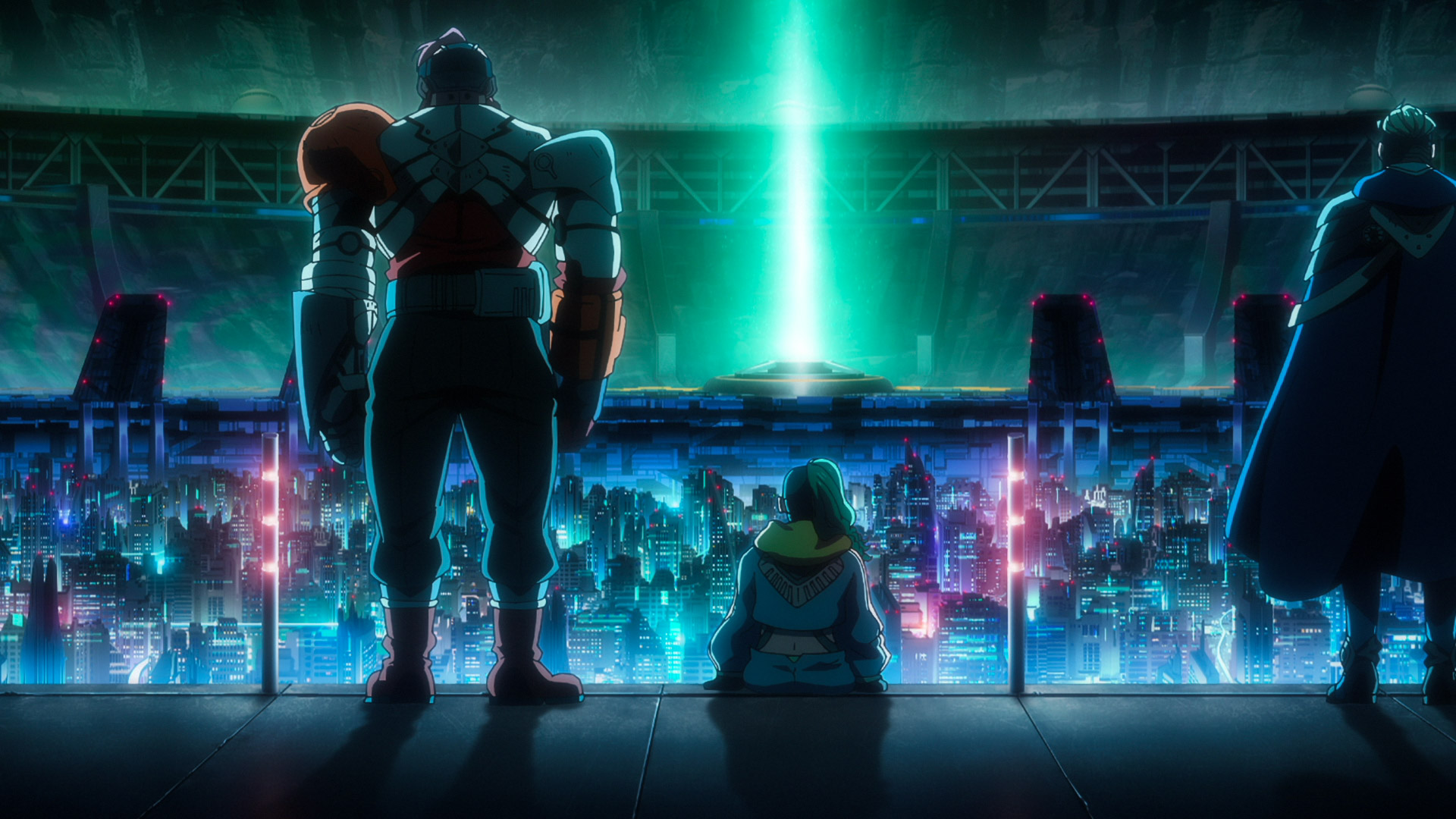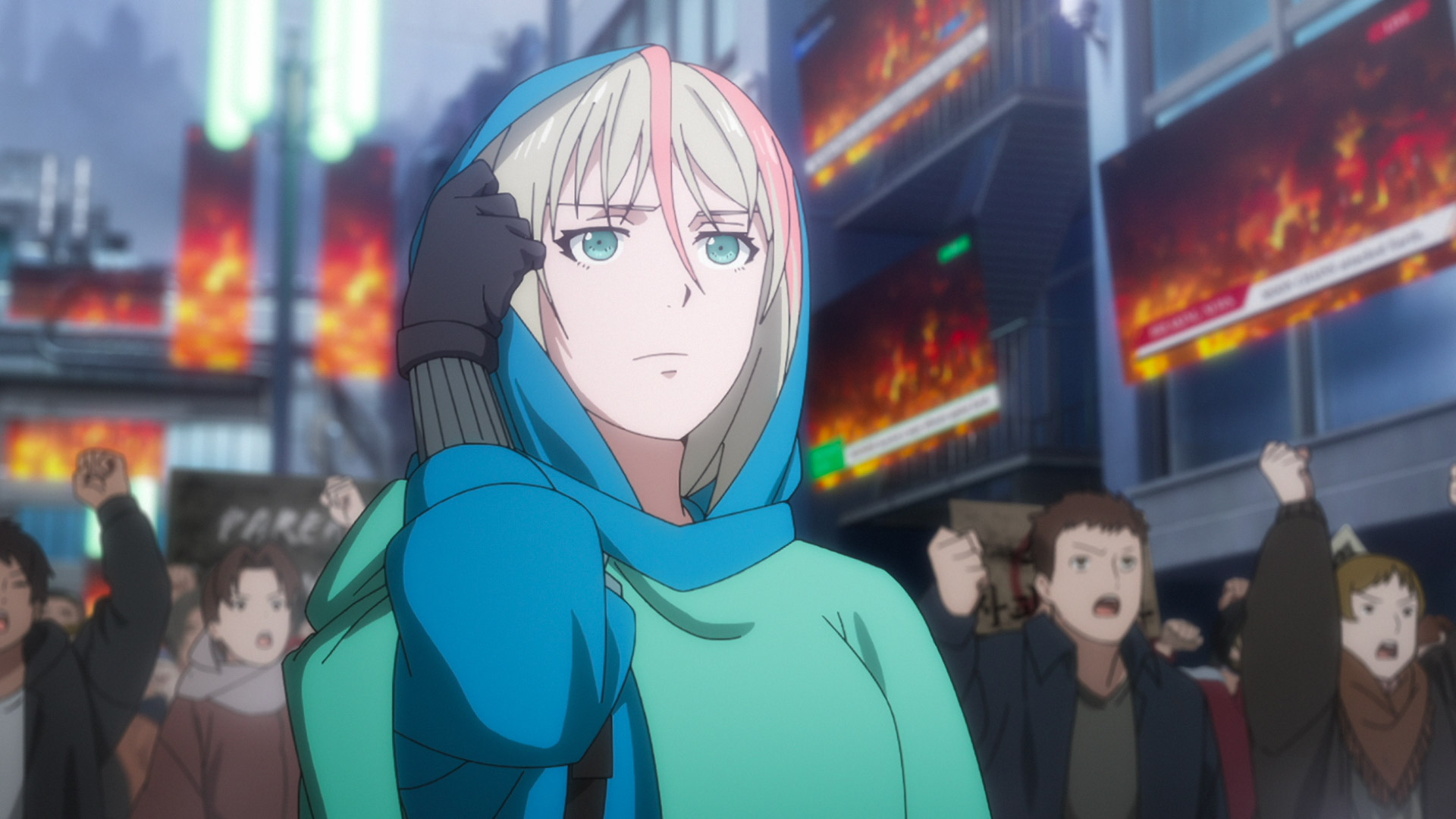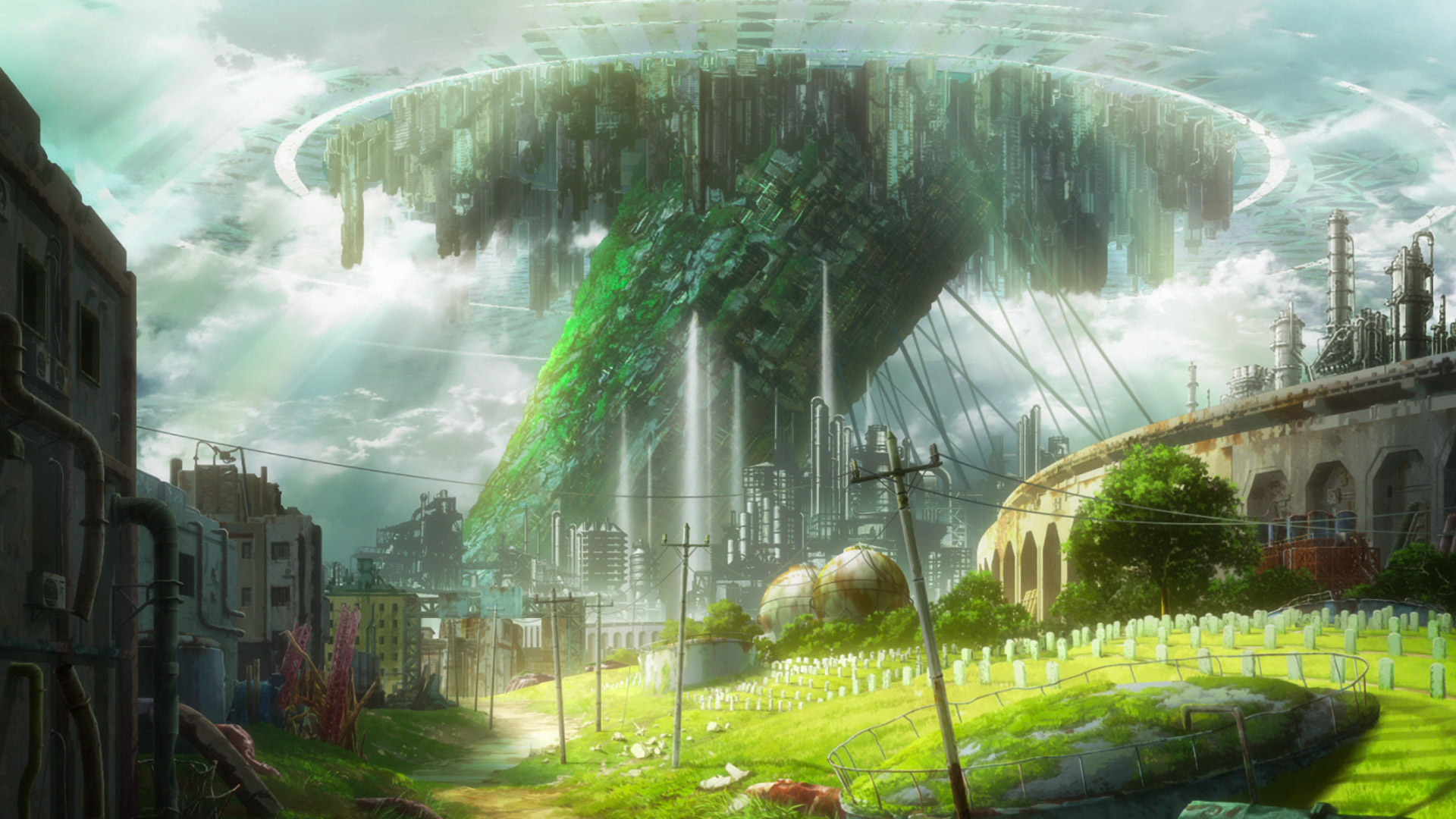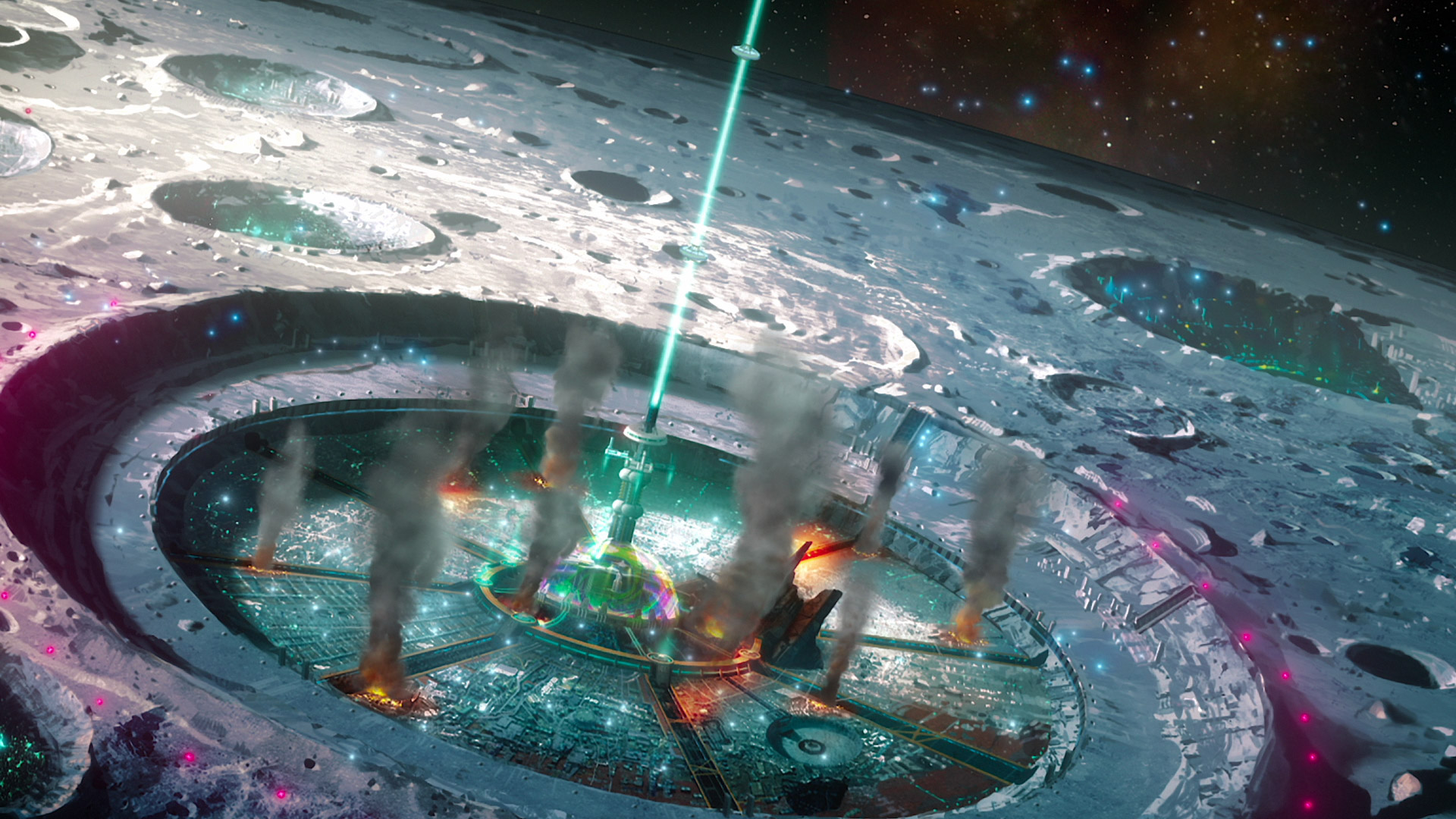Netflix's Moonrise creator was inspired by Attack On Titan and a futuristic 3D printing tech when making the anime series

Soaring in under the radar but making a sizable splash landing amid the best Netflix anime offerings, Moonrise arrived quietly on April 10, 2025 carrying with it the creative prestige of WIT Studio, veteran director Masashi Koizuka, and showcasing sharp character design courtesy of Fullmetal Alchemist’s Hiromu Arakawa.
This 18-episode sci-fi anime series is an adaptation of Psycho-Pass writer Tow Ubukata’s 2018 novel of the same name. It deals with an insurrection on the Moon leading to a conflict with Earth forces as a revolutionary group called the Moon Chains declares independence after a sudden calamitous destruction of Earth’s resource-dependent network of orbital elevators.
Moonrise’s interwoven narrative chronicles the revelations of Jack Shadow, whose family’s corporation controls an advanced AI named Sapientia that has established a peaceful protocol between Earth and its lessor lunar inhabitants, that is until disgruntled terrorists strike. Jack is reluctantly recruited into the VC3 Squad, a special forces recon unit entrusted with a secret Moon mission to locate and apprehend the charismatic rebel leader named Bob Skylum.
Koizuka is well-known in the anime sphere as helming one of the best anime shows, Attack on Titan seasons 2 and 3, and matched with the considerable experience of WIT Studio (Attack on Titan, Bubble, Vinland Saga), Moonrise is well-positioned for success with stunning visuals and multi-layered storyline.
TechRadar connected with Koizuka to learn more details on how one of the best Netflix shows came to be.
TechRadar: What was your initial concept and vision for the Moonrise anime series as creator and supervising director?

Masashi Koizuka: "This is a story of rebellion, where an unconscious perpetrator faces the anger of the victims attacking from the moon, confronting the ambiguity of good and evil for the first time and rising to the challenge. This was the initial concept we set forth. At that time, Mr. Ubukata's original idea was still in its early stages with limited information.
"Later, as Mr. Ubukata's original concept, which would become the axis of the work, began to take shape, I, as the director, set forth three major visions: the enjoyment of unraveling mysteries, the appeal of ensemble drama, and visual exhilaration and new action attempts.’ I started by considering how to link these three elements to Mr. Ubukata's original concept. As the project progressed, more people became involved, and various opinions were mixed in, which altered some details from the initial plan, but these three elements were what I first focused on."
Sign up for breaking news, reviews, opinion, top tech deals, and more.
TR: What attracted you most to the original Moonrise source material?
MK: "The world setting, and the concept of 'Engrave,' a future development of 3D printer technology, are central to this work. Just like how 3D objects can be freely formed on a computer, the idea of engraving the 'E2 Material,' a versatile material capable of a wide range of material transformations according to a program, became the foundation of this work. The action referred to as 'BRUSH' in the story is positioned as an application of this technology."
TR: Growing up, what were some of your favorite sci-fi books, anime, TV shows, or movies that made you want to become a filmmaker and animator?

MK: "I watched various works as a child, but if I limit it to science fiction, I was strongly influenced by Space Battleship Yamato."
TR: Was Moonrise inspired by any particular anime style or tone, and was there a specific property that gave your project its essence?
MK: "I believe I have been influenced by various works. Among them, Attack on Titan, which I was involved in, has had a significant impact on this work as well. As a creator, it is a work that is both a blessing and a curse, in both good and bad ways, because it is a work that helped me grow, and it is something I am constantly aware of."
TR: Can you describe the creative process with WIT Studios and Hiromu Arakawa in crafting the character design, color palette, and shape language?

MK: "When we requested the work, we provided the scripts up to #3, the plot up to #6, and notes on each character. Based on these, we organized meetings to discuss the world setting and characters before starting the design work.
"During these meetings, unique questions typical of Ms. Arakawa arose, such as 'How do toilets work on the moon?' or 'What kind of pigs live on the moon?' which made these meetings filled with laughter. We then refined the designs through conversation. Regarding colors, the WIT team explored various options. I was very pleased and impressed that having Ms. Arakawa's original character design added personality quirks and charm to the characters."
TR: How was this series different from your efforts working on Attack on Titan and how did it push you as a filmmaker?
MK: "Attack on Titan was challenging because it is based on a manga, but it had a lot of visual information that the staff could share. On the other hand, Moonrise required us to start the artwork from scratch while working in parallel with the original concept.
"Additionally, since it is being co-produced with Netflix, the process of reaching agreements and moving forward was significantly different. You could say it's the difference between a work that rushes headlong toward a somewhat visible goal and a work where the team explores the goal together. Both are challenging, but due to the significant differences in how they are built up, I believe I gained valuable experience."
TR: What was the most fun in delivering this first season of Moonrise to Netflix?
MK: "Animation production is full of challenges, but I think the most enjoyable moment is always the first rush check with the gathered staff. The excitement of seeing those individual drawings come to life as animation on the monitor is something that hasn't changed from the past to the present."
Moonrise is streaming on Netflix globally.
You might also like
Jeff Spry is a screenwriter and freelance journalist covering TV, movies, video games, books, and comics. His work has appeared at Space.com, SYFY Wire, Inverse, Collider, Bleeding Cool and elsewhere. Jeff lives in beautiful Bend, Oregon amid the ponderosa pines, classic muscle cars, a crypt of collector horror comics, and two loyal English Setters.
You must confirm your public display name before commenting
Please logout and then login again, you will then be prompted to enter your display name.
